-
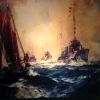 +2 +1
+2 +1Why Didn’t the Lusitania Sinking Send the U.S. to War?
It would be two years before the first armed American destroyers sailed for Europe. By Joanna Scutts.
-
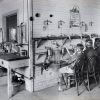 +2 +1
+2 +1The Chemists’ War
One hundred years after the end of World War I, the Army Corps of Engineers is still cleaning up the relics of experiments that helped develop chemical weapons to counter the Germans’ gas attacks.
-
 +23 +1
+23 +1The incontrovertible truth about World War I
Our starting point for all commemorations must be deep sorrow, not only for the lives lost, but the effects on those who remained. By Peter FitzSimons.
-
 +4 +1
+4 +1How Horror Changed After WWI
W. Scott Poole on the abyss opened up by the Great War.
-
 +1 +1
+1 +1After the bullets, the brushes: how the First World War transformed art
When the war finally came to an end, artists on both sides had to face the problem of how to paint the peace. By Michael Prodger.
-
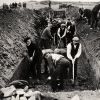 +14 +1
+14 +1The Scottish island that buried America's dead
Hundreds of US troops were buried on Islay after two huge naval disasters at the end of World War One.
-
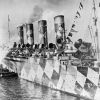 +35 +1
+35 +1How Cubism Protected Warships in World War I
Dazzle camouflage used to save warships from enemy targeters. Now it's back, reinvented with e-ink displays that cloak a San Diego building.
-
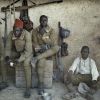 +20 +1
+20 +1How colonial violence came home
The ugly truth of the first world war. By Pankaj Mishra.
-
 +39 +1
+39 +1'Death Island': Britain's 'concentration camp' in Russia
British soldiers opened the first concentration camp in Russia in 1918, during World War One. To locals it was known as "Death Island".
-
 +25 +1
+25 +1Who was the real Mata Hari?
The exotic dancer turned secret agent remains an enigma 100 years after her death. She gave us the idea of the sexy spy, including 007.
-
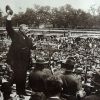 +10 +1
+10 +1Why Teddy Roosevelt Tried to Bully His Way Onto the WWI Battlefield
Tensions ran high when President Wilson quashed the return of the former president’s Rough Riders
-
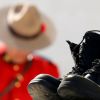 +13 +1
+13 +1Vimy Ridge centenary: Thousands of Canadians mark battle's anniversary
More than 20,000 Canadians have traveled to Europe to mark the centenary of one of the country's defining moments - the Battle of Vimy Ridge during World War One. About 3,600 Canadians died in the battle in northern France, that began on Easter Sunday, 9 April 1917. It was the first time different Canadian military divisions had fought together under one command.
-
 +22 +1
+22 +1100 Years Later: Popular Mechanics' Coverage of World War I
Four days after President Woodrow Wilson called for a special session of Congress in early April 1917, the U.S. officially declared war against the German Empire, becoming an associated power with the Allied Forces and entering into one of the bloodiest conflicts to ever grip Europe. It would still take more than two months for the first troops to arrive in the fields of France, but the U.S. had finally chosen a side.
-
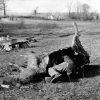 +10 +1
+10 +1World War I in Photos: Technology
Industrialization brought massive changes to warfare during the Great War. Newly-invented killing machines begat novel defense mechanisms, which, in turn spurred the development of even deadlier technologies. Nearly every aspect of what we would consider modern warfare debuted on World War I battlefields. By Alan Taylor.
-
 +29 +1
+29 +1The Legend of What Actually Lived in the “No Man’s Land” Between World War I’s Trenches
Born of the horrors of trench warfare, a ghoulish tale of scavengers and scofflaws took hold 100 years ago. By James Deutsch. (Sept. 8, 2014)
-
 +14 +1
+14 +1Wreck of German U-boat found off coast of Stranraer [Scotland]
The wreck of a German U-boat that sank almost 100 years ago is discovered by engineers laying subsea power cables.
-
 +8 +1
+8 +1In Parenthesis: in praise of the Somme’s forgotten poet
David Jones’s first world war poem was hailed by TS Eliot as a work of genius. So why has its author been largely forgotten? By Owen Sheers.
-
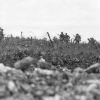 +12 +1
+12 +1Silence the most fitting memorial at Somme commemorations
On centenary of first world war battle, poignant services were attended by political leaders and victims’ descendants. By Esther Addley and Helen Pidd.
-
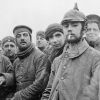 +30 +1
+30 +125th December 1914 - The Christmas Truce
Just after midnight on Christmas morning, the majority of German troops engaged in World War I cease firing their guns and artillery and commence to sing Christmas carols. At certain points along the eastern and western fronts, the soldiers of Russia, France, and Britain even heard brass bands joining the Germans in their joyous singing. Image © IWM (Q 11745).
-
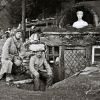 +19 +1
+19 +1The Art of Homemaking in a World War Dugout
Even amidst the unimaginable horrors of war, there’s just something so relatable about bringing the comforts of home into such an unlikely setting...
Submit a link
Start a discussion




















